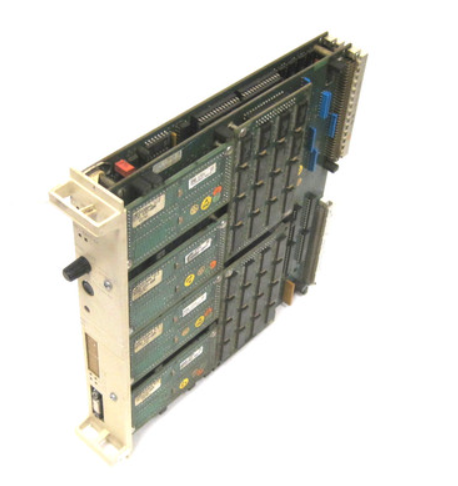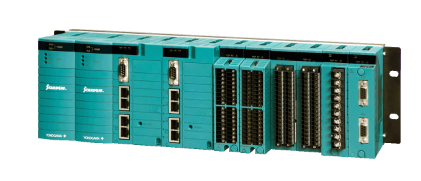ABB 3HAC6428-1/04 is a high-performance control module designed for high-end industrial automation control scenarios. Its core belongs to ABB robot control systems (such as the IRC5 series) and complex industrial equipment control systems, mainly responsible for core tasks such as motion control, logical operations, equipment collaborative scheduling, and real-time data processing. It has ultra-high computing speed, multi axis synchronous control capability, and rich communication interfaces, which can accurately drive multiple servo motors, coordinate multi device linkage, and support complex control algorithms (such as PID closed-loop control and trajectory planning algorithm), meeting the industrial control requirements of high precision and high dynamic response.
ABB 3HAC6428-1/04 high-performance control module
Product Overview
ABB 3HAC6428-1/04 is a high-performance control module designed for high-end industrial automation control scenarios. Its core belongs to ABB robot control systems (such as the IRC5 series) and complex industrial equipment control systems, mainly responsible for core tasks such as motion control, logical operations, equipment collaborative scheduling, and real-time data processing. It has ultra-high computing speed, multi axis synchronous control capability, and rich communication interfaces, which can accurately drive multiple servo motors, coordinate multi device linkage, and support complex control algorithms (such as PID closed-loop control and trajectory planning algorithm), meeting the industrial control requirements of high precision and high dynamic response.
This module adopts modular and redundant design, suitable for harsh industrial environments, and can seamlessly integrate with ABB series I/O modules, sensors, and actuators. It is widely used in automotive manufacturing (such as welding robots, assembly robots), precision machining (such as CNC machine tools), heavy machinery (such as metallurgical equipment) and other fields, and is the core control unit that ensures efficient, stable, and precise operation of industrial production lines.
Specification parameters
Basic Information
Model: 3HAC6428-1/04 Series: ABB IRC5 Robot Control System Supporting Module Type: High Performance Motion Control and Logic Control Integrated Module
Compatible with mainstream ABB robots and industrial control equipment, supporting system expansion and upgrade
Computational performance
Main processor: 32-bit dual core industrial grade CPU, main frequency 1.2GHz, floating point computing capability: 1.8 GFLOPS, logical computing speed: 1000 instructions/μ s, program storage capacity: 8GB flash memory (expandable to 32GB), data cache capacity: 2GB DDR4 RAM
Meet the requirements of multi axis synchronous control and real-time computation of complex algorithms
Control ability
Maximum number of control axes: 16 axes (servo motor/stepper motor) Control accuracy: ± 0.001mm (position control), ± 0.01rad/s (speed control) Motion modes: point control, linear interpolation, arc interpolation, trajectory planning PID control: supports incremental/positional PID, parameter adaptive tuning
Suitable for high-precision motion control scenarios, such as robot welding trajectory control and machine tool precision machining
Communication and Interface
Communication protocols: Profinet IRT, EtherCAT, Modbus TCP, CANopen, ABB dedicated robot communication protocol Interface types: 2 Gigabit Ethernet ports (RJ45, supporting dual network redundancy), 4 CAN interfaces, 2 RS485 serial ports, 8 digital input/output interfaces (expandable), 2 encoder interfaces (supporting 1Vpp differential signals)
Dual network redundancy ensures communication reliability, and multiple interfaces meet the interconnection needs of multiple devices
Power supply and power consumption
Working power supply: 24VDC (± 10%) Typical power consumption: 15W Maximum power consumption: 25W Power protection: overvoltage protection (triggered by 30VDC), overcurrent protection (triggered by 2A), short circuit protection
Low power design, multiple protections to prevent module damage caused by abnormal power supply
Environmental adaptability
Working temperature: -25 ℃ to 65 ℃ Storage temperature: -40 ℃ to 85 ℃ Relative humidity: 5% -95% (no condensation) Vibration level: IEC 60068-2-6, 5-500Hz, 10g Acceleration impact level: IEC 60068-2-27, 50g Acceleration (11ms duration) Protection level: IP20 (module body), IP65 (front-end connector with sealing gasket)
Resistant to industrial site vibrations, impacts, and high/low temperature environments, suitable for harsh working conditions
Physical specifications
Size: 140mm x 180mm x 60mm (length x width x height) Weight: 1.2kg Installation method: DIN rail installation (compatible with 35mm standard rail) Shell material: flame retardant ABS plastic (UL94 V-0 grade)
Compact design saves installation space for control cabinets, and flame-retardant materials enhance safety
Security and Certification
Safety certification: IEC 61508 SIL 3 (Safety Integrity Level), EN ISO 13849-1 PL d Electromagnetic Compatibility (EMC): Compliant with IEC 61000-6-2 (Industrial Environment Immunity), IEC 61000-6-4 (Industrial Environment Emission Limits) Environmental certification: RoHS 2.0 (Lead free, Halogen free)
Meet high security level control scenarios, such as explosion-proof areas, personnel safety related equipment control
Performance characteristics
Ultra high computing and control accuracy: Equipped with a dual core industrial grade CPU with a main frequency of 1.2GHz, the logical computing speed exceeds 1000 instructions/μ s, and can quickly process multi axis motion control instructions; The position control accuracy reaches ± 0.001mm, supporting 16 axis synchronous control, meeting the strict requirements of robots, machine tools and other equipment for trajectory accuracy and motion synchronization.
Rich motion control functions: covering point control, linear/circular interpolation, trajectory planning and other full scene motion modes, built-in parameter adaptive PID algorithm, can automatically adjust PID parameters according to load changes, achieve precise control with overshoot<5% and steady-state error<0.1%, and adapt to complex motion trajectory requirements.
High reliability and redundancy design: The communication layer supports dual gigabit Ethernet redundancy, with a network disconnection switching time of less than 10ms, ensuring uninterrupted data transmission; The power supply has triple protection against overvoltage, overcurrent, and short circuit. The core components are selected from industrial grade, with an average time between failures (MTBF) of over 150000 hours, meeting the uninterrupted operation requirements of continuous production scenarios.
Flexible expansion and multi device compatibility: Comes with 8 digital I/O interfaces, which can be expanded to 256 channels through expansion modules; Supports mainstream industrial protocols such as Profinet IRT and EtherCAT, seamlessly connecting ABB robots, third-party servo drives (such as Siemens and Panasonic), and sensors (such as laser rangefinders) without the need for additional conversion modules, reducing system integration difficulty.
Convenient debugging and intelligent diagnosis: Supports dual software debugging of ABB RobotStudio and Control Builder, allowing for pre planning of motion trajectories and online modification of control parameters through a 3D simulation environment; Built in intelligent diagnostic function, real-time monitoring of module temperature, power status, communication link, and axis motion status. Fault information is prompted through LED indicator lights and software interface, and supports uploading fault codes to the upper computer for quick location and troubleshooting.
Working principle
The ABB 3HAC6428-1/04 high-performance control module, as the core unit of the industrial control system, has a workflow that revolves around instruction reception, data processing, control operations, execution driving, and state feedback. The specific steps are as follows:
Instruction reception and data acquisition: The module receives control instructions (such as motion trajectory parameters and process parameters) issued by the upper computer (such as MES system, robot teaching pendant) through Gigabit Ethernet port, CAN interface, etc. At the same time, it collects feedback signals of servo motor position and speed through encoder interface, and collects status signals of sensors (such as limit switches and pressure sensors) through digital I/O interface. All data is transmitted in real-time to the internal data buffer area.
Data processing and computation: The main processor (dual core CPU) synchronously processes the collected instructions and feedback data. On the one hand, it parses control instructions and generates motion control target parameters (such as target position and target speed); On the other hand, by comparing the feedback data of the motor with the target parameters, the deviation value is calculated. If the deviation exceeds the threshold, the PID control algorithm is triggered for deviation correction. For multi axis control scenarios, the processor generates interpolation points for coordinated motion of each axis through trajectory planning algorithms to ensure multi axis synchronization accuracy (synchronization error<0.01mm).
Control signal output and execution drive: The processed control signals (such as PWM drive signals and direction control signals) are amplified by the internal drive circuit of the module and transmitted to the servo driver to drive the servo motor to move according to the planned trajectory; At the same time, the module controls the actions of actuators (such as solenoid valves and contactors) through digital output interfaces, achieving collaborative control of process operations (such as welding and clamping). For the EtherCAT/Profinet IRT protocol, the module transmits control signals to the slave devices with microsecond level delay through real-time Ethernet, ensuring the real-time linkage of multiple devices.
Status feedback and fault monitoring: The module collects real-time operational status data of servo motors and actuators (such as motor current, temperature, and actuator action completion signals), and sends it back to the upper computer through a communication interface for monitoring by operators; At the same time, the internal diagnostic circuit continuously monitors the status of the module itself (such as CPU temperature, power supply voltage, communication link). If abnormalities are detected (such as motor overcurrent, communication interruption), protection actions are immediately triggered (such as stopping motor operation, cutting off output signals), and fault codes are generated. The system is alerted through LED indicator lights (such as flashing red fault lights) and software interface alarms to ensure system safety.
Redundancy guarantee mechanism: If the main communication link (such as the main Ethernet) fails, the module will automatically switch to the backup communication link, with a switching time of less than 10ms, to ensure uninterrupted transmission of control instructions and feedback data; At the power supply level, if the input voltage exceeds the range of 24VDC ± 10%, the overvoltage protection circuit will trigger and cut off the power input to prevent damage to internal components of the module.

- User name Member Level Quantity Specification Purchase Date
- Satisfaction :
-









Email:wang@kongjiangauto.com




































































































































